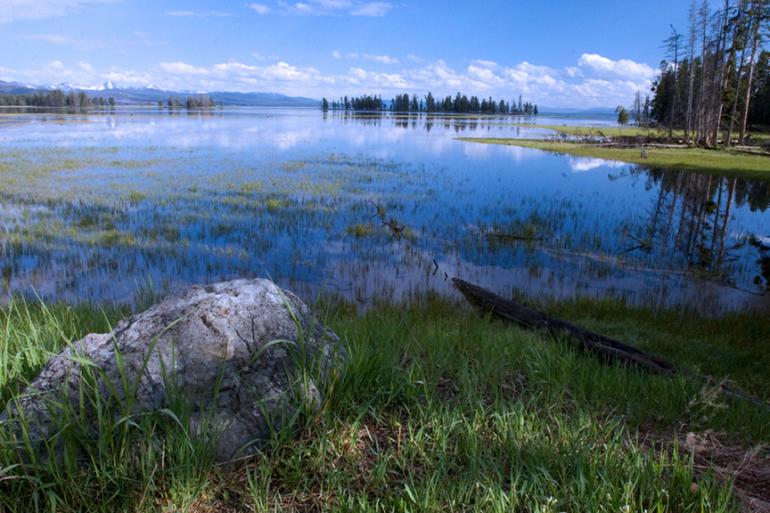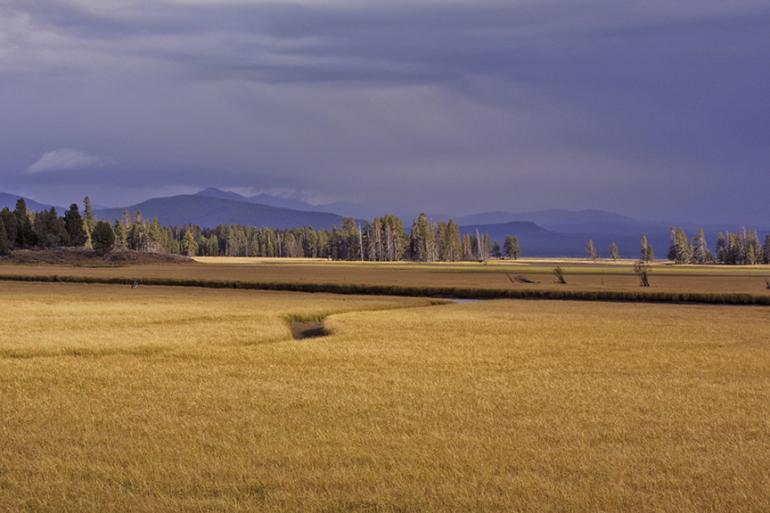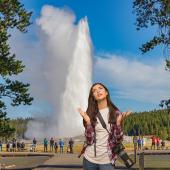Bison, Birds, and Blooms
Photographing Yellowstone’s shoulder season.
Yellowstone in spring is a photographer’s dreamscape. Newborn elk, moose, and bison wobble in green meadows. Birds flock north in search of nesting areas. Bears emerge from dens with hungry cubs. Flowers bloom, and the weather makes for dramatic landscapes featuring bright skies and roiling cloud cover.
Photographers travel from across the globe to photograph Yellowstone during springtime—and most say it’s worth the effort. However, capturing the beauty of this season can be challenging for even the best photographer. Here are some important tips to consider when photographing the Park’s most dramatic—and fickle—shoulder season.
Prepare for the Weather
Yellowstone is notorious for sudden changes in temperature, especially in springtime. Without notice, clear skies and warm temperatures turn into freezing winds and snow bursts. Rain starts and ends without warning. Some days are unseasonably hot. The best way to prepare for the elements is to dress in layers including a windproof, water-resistant shell, hand protection that allows you to shoot pictures, and warm, water-resistant footwear to protect feet against icy puddles and stubborn snow patches. Sunscreen, plenty of water, and eye protection are also necessary.
Protect Your Camera
Consider weather protection for your equipment. Protective gear can be purchased through retailers, but a simple plastic garbage bag also works to block rain and snow. Ideally, the protection won’t flap in the wind or require noisy Velcro that could scare away wildlife. Don’t forget a tripod—in addition to steadying your camera, it provides extra support in challenging conditions.
About that Camera
Photographers needn’t spend lots of money when choosing a camera, says photographer Meg Sommers, who teaches multi-day courses for the Yellowstone Association Institute. Depending on the type of photograph desired, point-and-shoot or smartphone cameras work just fine. If you’re looking for a higher-quality image, consider an SLR (single-lens reflex) that accepts interchangeable lenses. Then you can invest in different lenses based on the type of photographs desired.
Respect the Wildlife
When photographing wildlife, remember that animals experience life-and-death battles on a daily basis and shouldn’t be further stressed. Yellowstone National Park requires visitors to stay at least 100 yards from bears and wolves and 25 yards from other wildlife. However, if your presence causes an animal to change its behavior, then you’re still too close. If you’re serious about wildlife photography, consider a 500mm lens—at minimum. Otherwise, be content to capture the story from a distance.
Approaching Landscape
In regard to landscape, Sommers instructs photographers to “start with a basic understanding of how your camera works.” After that, she explains “the most critical element is to be there a lot, and always be tuned in, looking for images.” The two shots included here were taken from the same location: a pullout on the west side of Pelican Creek, just east of Fishing Bridge in the eastern reaches of the Park. The first picture, taken in June, shows runoff from snowmelt. As the season progresses, the grass grows and dries, offering a completely different landscape.
Don’t Forget to Practice
Experiment with your equipment at home before heading into the field. To prepare for wildlife photography, practice on the family pet. Try photographing your backyard or neighborhood to prepare for landscapes. Don’t discount photography books, online courses, and local workshops. Hands-on classes provide one-on-one time and feedback from knowledgeable instructors.
Chelsea DeWeese is based in Gardiner, at the north entrance to Yellowstone Park.












